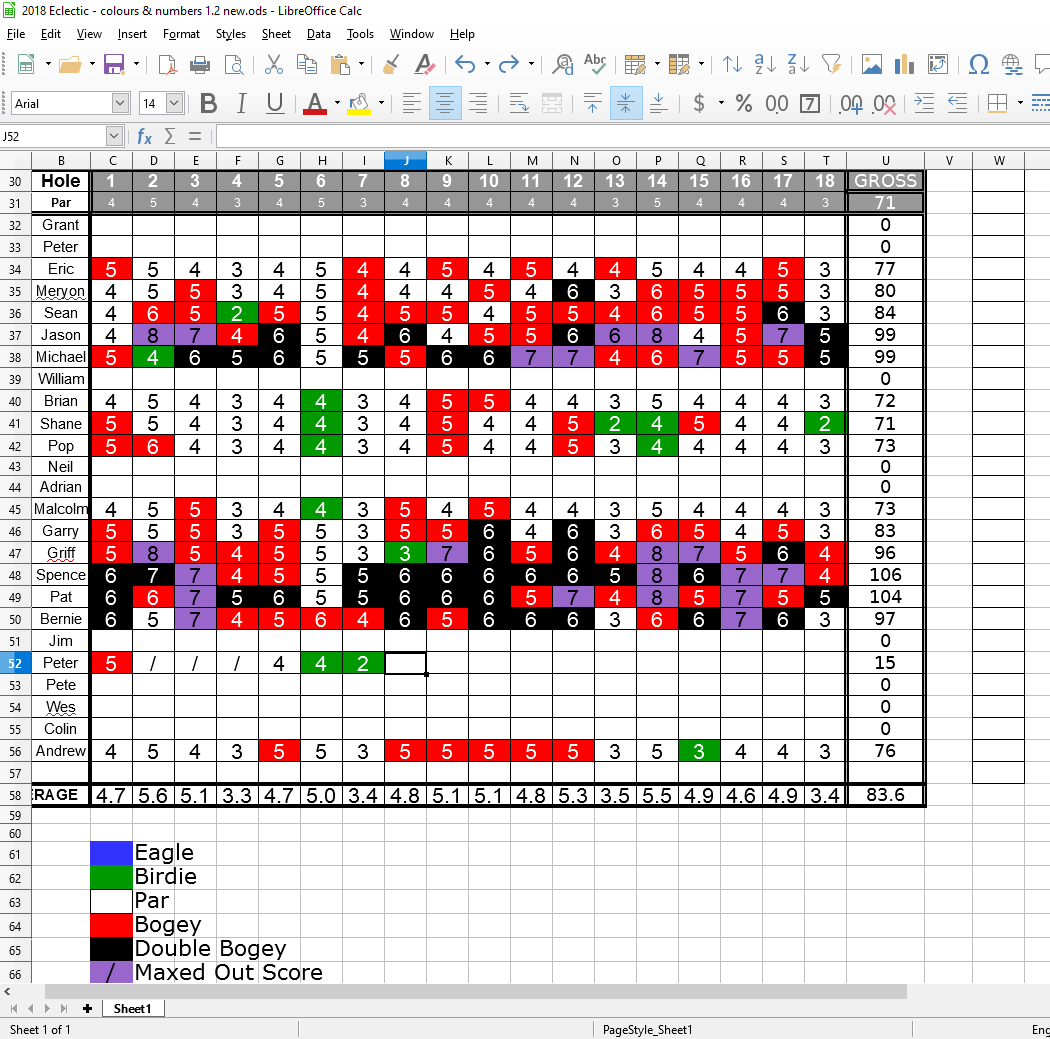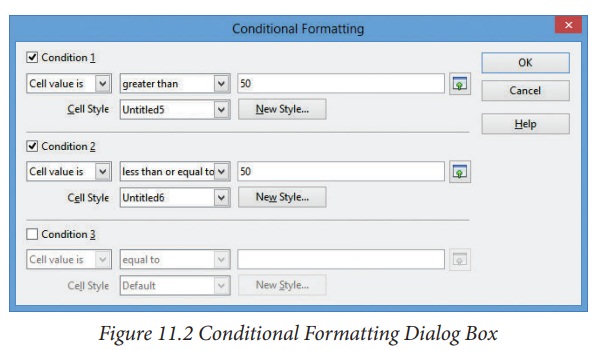

- #Openoffice conditional formatting more than 3 conditions how to#
- #Openoffice conditional formatting more than 3 conditions code#
Now as I am sure you guys know, the code I have for the usual conditional formatting shown below will not work on formulas (because there is no Worksheet_Change event occuring), so what I need is a different but similar version which I think needs to work with Worksheet_Calculate, but you guys know a lot better than me. This means my final cell has a simple formula =E21*E18 (E21 = MAX, E18 = value of drop down box) Then use the MAX x value of another seperate 1-5 drop down box cell. This works perfectly, but the final step in my spreadsheet is to do some math on the (5) 1-5 drop down box cells and come up with the MAX. In most cells I use drop down boxes to select a number between 1 and 5, the VB code then formats the cell background colour and puts a word (condition dependent) into the cell to left of it. I hope you can use the method explained in this tutorial for your own data and applications, to get your required formatting results.I found here an excellent method of using Worksheet_Change to exceed the conditional format limits in excel, this has been of great use to my spreadsheet but I need a similar code that works with Worksheet_Calculate. In our case the Rule ‘cell value between 8000 to. You shall see a new dialog box in which you can see the order of your formatting. To check the precedence order, go to conditional formatting and select the option of Manage Rules.
#Openoffice conditional formatting more than 3 conditions how to#
In this tutorial, I showed you step by step how to use conditional formatting with OR criteria to highlight data in a table if at least one of the given conditions is met. While applying the formatting, excel checks the precedence order and then it applies the rules accordingly. If you are a fan of Excel’s conditional formatting feature, you probably find looking for even more and more ways to highlight useful information in your data. You can also follow the same technique with other comparison functions like AND and NOT. By Tepring Crocker Categories: Conditional Formatting, Excel® Tags: If/Then Conditional formatting Steps in this article will apply to Excel 2007-2016. You can apply this method with as many conditions and as many types of conditions as you need to. You can add more conditions to this if needed. I need to apply more than the standard 3 colors generated in excel. I have a range of numbers that I need to apply conditional formating to.

The function returns a logical value based on the set of conditions, which can be either TRUE or FALSE. Logical functions like OR, AND and NOT let you carry out more than one comparison, or test multiple conditions. Set rng Intersect (Target, Range ('R7:R1000')) If rng Is Nothing Then. This means that Excel will decide which cells to format based on the result of a formula. Private Sub WorksheetSelectionChange (ByVal Target As Range) Conditional Formatting for more than 3 conditions. In this tutorial, we will be applying conditional formatting using a formula.


The great thing about conditional formatting is that it lets you specify the condition or criteria for formatting in a multitude of ways. Most often it is to apply color-based formatting to highlight, emphasize, or differentiate among data and information stored in a spreadsheet. Using Conditional Formatting with OR CriteriaĬonditional formatting allows you to apply particular formatting to only those cells that satisfy the given criteria.What is Conditional Formatting in Excel?.


 0 kommentar(er)
0 kommentar(er)
